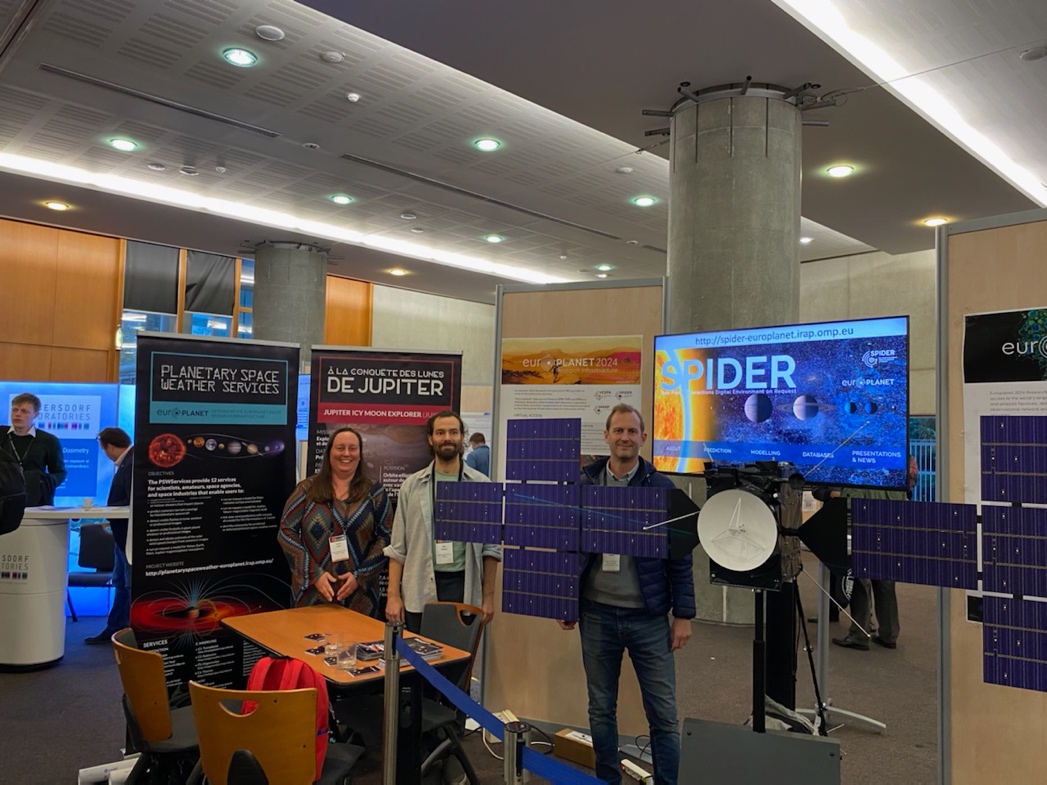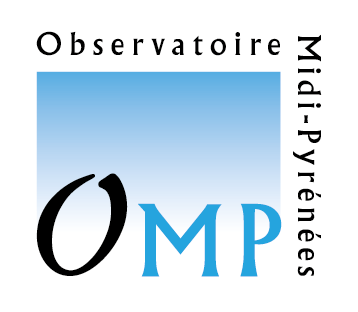Europlanet SPIDER booth with JUICE scale model at ESWW 2023
The annual gathering of the Space Weather and Space Climate community, the European Space Weather Week, was organized by IRAP and took place in Toulouse on 20-24 November 2023. This annual conference welcomes all science and technology topics overarching from the Sun to the planets, with a large focus on the Earth. It usually includes several platforms to exchange knowledge and ideas, besides plenary and parallel scientific sessions, with topical discussion meetings, tutorials, and booths in a dedicated exhibition area. More than 600 participants attended the conference in Toulouse.
The Sun Planets Interactions Digital Environment on Request (SPIDER) of the Europlanet Research Infrastructure 2024 programme contributed during the conference week with a dedicated booth (see photo) organized in a frequented part of the exhibition area. The 1:10 scale model of the JUICE spacecraft attracted many conference participants and the 3D-printed globes of the Jovian moons had also a great success. At the booth, IRAP and Wigner Institute had the opportunity to directly meet the community and tell them about Europlanet and the SPIDER services that include models related to Space Weather.
IRAP and Wigner Institute have also organized a Topical Discussion Meeting about ‘Planetary Space Weather’ with more than 40 participants, where we could trigger feedback, comments, and suggestions from the audience. The need for dedicated models supporting the future planetary missions beyond BepiColombo and JUICE, in particular missions to the Moon and Mars, was emphasized.

Team in action – Nicolas André (SPIDER Lead), Andrea Opitz (SPIDER Deputy) and Máté Tomasik (Widening representative) at the Europlanet SPIDER booth.
Space weather – the monitoring and prediction of disturbances in our near-space environment and how they are controlled by the Sun – is now recognised as an important aspect of understanding our Earth and protecting vital assets such as orbiting satellites and power grids.
The Planetary Space Weather Services (PSWS) of the Europlanet H2020 Research Infrastructure funded by the European Union’s Horizon 2020 research and innovation programme under grant agreement No 654208 aimed to transform the science of space weather, by extending its scope throughout the Solar System. PSWS made five entirely new ‘toolkits’ accessible to the research community and to industrial partners planning for space missions: a general planetary space weather toolkit, as well as three toolkits dedicated to the following key planetary environments: Mars (in support of the ESA ExoMars missions), comets (building on the success of the ESA Rosetta mission), and outer planets (in preparation for the ESA JUICE mission launched in 2023).
In the framework of the Europlanet-RI 2024 programme funded by the European Union’s Horizon 2020 research and innovation programme under grant agreement No 871149 and finishing this year, The Sun Planets Interactions Digital Environment on Request (SPIDER) has extended PSWS services and gives planetary scientists, space agencies and industries access to six unique, publicly available and sophisticated services in order to model planetary environments and solar wind interactions through the deployment of a dedicated run on request infrastructure and associated databases, targeting in particular the Solar Orbiter, BepiColombo, Juno, and JUICE missions.
Further Resource
- Website dedicated to SPIDER
Contacts
- Nicolas ANDRE, SPIDER Lead at IRAP, nandre@irap.omp.eu
- Andrea OPITZ, SPIDER Deputy at Wigner Institute in Hungary






